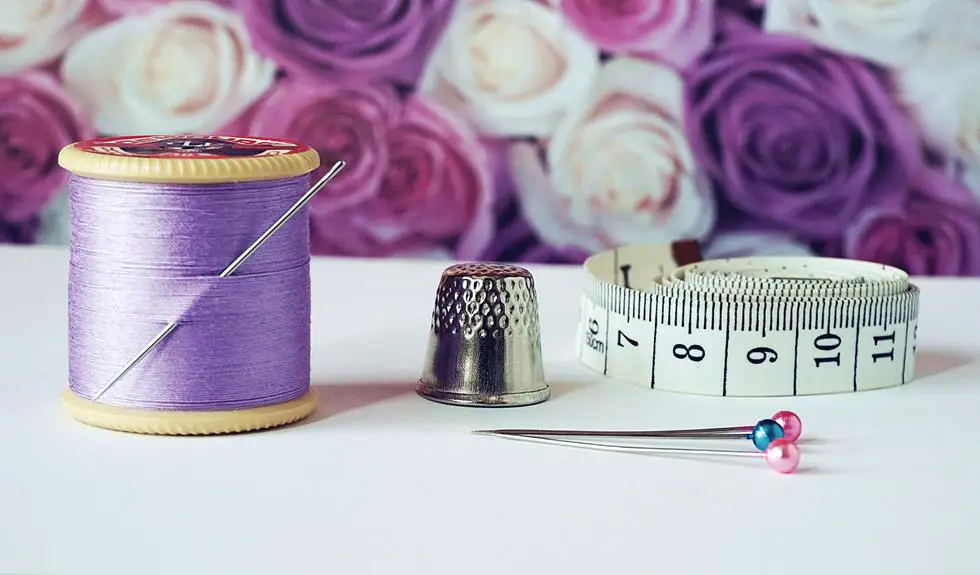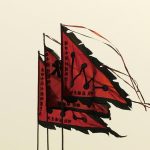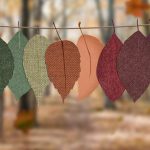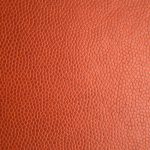When you're ready to tackle sewing with damask fabric, it's crucial to understand both its unique properties and the tools you'll need. You'll want to start with proper preparation, including pre-washing the fabric to ensure optimal results. Choosing the right needle and cutting techniques can make a significant difference in your final piece. But there are specific tips and techniques that can elevate your work from ordinary to exceptional. Curious about the essential steps that can save you time and frustration? Let's explore those together.
Table of Contents
Understanding Damask Fabric
Damask fabric is a luxurious textile known for its intricate patterns and reversible designs, making it a popular choice for both fashion and home decor. When you work with damask, you'll appreciate its rich texture and elegant appearance. Typically woven from silk, cotton, or synthetic fibers, this fabric offers a soft feel and a stunning visual depth.
It's important to note that damask can be heavier than other fabrics, which impacts how you sew and style your projects. The weight can add structure to garments but may also require adjustments in your sewing techniques. You'll want to pay attention to the fabric's grain; cutting along the grain ensures that your finished piece drapes beautifully.
When washing damask, you should always follow care instructions to maintain its quality. Most damask fabrics are best dry cleaned or washed gently on a cold cycle to prevent fading or shrinkage.
Familiarize yourself with the fabric's characteristics, as this knowledge will help you choose the right patterns and designs. Understanding damask fabric will empower you to create stunning pieces that showcase its beauty and sophistication.
Choosing the Right Tools
When sewing with damask fabric, having the right tools on hand makes all the difference in achieving a polished finish. Start with a sharp pair of fabric scissors, as they'll ensure clean cuts without fraying the edges. You'll also want to invest in a rotary cutter and mat for precise, straight lines.
For sewing, a high-quality sewing machine with a needle suitable for heavier fabrics is crucial. A universal or a ballpoint needle works well, but don't hesitate to try a specific needle designed for woven fabrics if needed.
Thread choice is equally important; opt for a good-quality polyester thread that complements your damask fabric. It'll provide strength and flexibility, preventing breakage during sewing.
Don't forget about pins and clips! Use silk pins to avoid damaging the fabric, or consider fabric clips for thicker layers.
Preparing Your Fabric
Before you start sewing, it's important to properly prepare your damask fabric to ensure the best results.
Begin by washing your fabric according to the care instructions. This step removes any chemicals or finishes that could alter the fabric's texture or color. Use a gentle cycle with cold water to prevent shrinkage and fading.
Once washed, lay your damask flat on a clean, dry surface. If there are wrinkles, iron it on a low setting, using a pressing cloth to protect the fabric's delicate fibers. Always test the iron on a small, inconspicuous area first to avoid any damage.
Next, check for any flaws or imperfections in the fabric. Look for snags, stains, or uneven patterns that could affect your project. If you find any issues, consider using a different piece of fabric.
Cutting Techniques
When it comes to cutting damask fabric, using the right tools is essential for a clean finish.
You'll want to ensure accurate measurements to avoid any mishaps in your project.
Let's look at effective techniques for cutting patterns that will help you achieve professional results.
Choosing the Right Tools
To achieve clean edges and precise cuts on damask fabric, you'll need the right combination of cutting tools.
Start with a sharp pair of fabric scissors. Dull blades can snag and fray the delicate fibers, ruining your fabric. Invest in a rotary cutter for straight lines; it glides smoothly through multiple layers and minimizes the risk of distortion.
Next, use a cutting mat to protect your surfaces. This will keep your scissors and rotary cutter from dulling too quickly while providing a stable base for your fabric.
Don't forget about a clear ruler; it ensures your cuts are straight and accurate, especially when working with patterned damask.
If you're tackling intricate designs, consider using a pair of pinking shears. These add a decorative edge while helping to prevent fraying.
For curved cuts, small, sharp scissors can give you more control and precision.
Accurate Measurement Guidelines
Accurate measurements are crucial for achieving the perfect fit and finish in your damask sewing projects. When you're working with damask, its intricate patterns can be a bit tricky, so you'll want to ensure your measurements are spot on.
Start by using a flexible measuring tape for body measurements or any curves. Measure twice before marking, as this will help you catch any errors early on.
Always keep in mind the grainline of the fabric. Align the fabric straight with the grain to avoid distortion after cutting. It's also wise to account for seam allowances; typically, ½ inch to 1 inch is standard, but check your pattern for specifics. Don't forget to measure any additional elements like hems or facings, which can affect the overall look.
Once you've taken your measurements, it's a good idea to jot them down immediately. This way, you'll avoid confusion later.
Lastly, remember that damask can shift when handled, so handle it gently and lay it flat when you're measuring. By following these accurate measurement guidelines, you'll set yourself up for successful cutting and sewing, ensuring your final product looks professional and polished.
Cutting Patterns Effectively
Using sharp fabric scissors or a rotary cutter ensures clean edges and helps prevent fraying when cutting your damask patterns. To achieve the best results, follow these cutting techniques:
- Lay out your fabric flat: Smooth out any wrinkles to avoid uneven cuts.
- Pin or weight down your pattern: This keeps everything in place and helps maintain accuracy.
- Cut with a steady hand: Use slow, deliberate movements to ensure you don't accidentally shift the fabric.
- Follow the grain of the fabric: Cutting along the grain helps maintain the fabric's structure and drape.
Remember that damask fabric can be slippery, so take your time when cutting.
Double-check your measurements and make sure your pattern aligns with the fabric's design for a polished finish.
With these techniques in mind, you'll be well on your way to creating beautiful projects with your damask fabric.
Happy cutting!
Sewing Tips and Techniques
When sewing with damask fabric, choosing the right needle is crucial for achieving clean stitches.
You should also pre-wash your fabric to prevent any surprises later on, like shrinkage or color bleeding.
Let's explore these essential tips to make your sewing experience smoother and more successful.
Choosing the Right Needle
Choosing the right needle is essential for sewing with damask fabric, as it ensures clean seams and prevents damage to the delicate fibers. Damask can be intricate and often features ornate patterns, so using the appropriate needle will help you achieve professional results while keeping your fabric intact.
Here are some tips to guide you in selecting the perfect needle:
- Universal Needle: A size 70/10 or 80/12 universal needle works well for most damask fabrics.
- Ballpoint Needle: If your damask has a knit back, opt for a ballpoint needle to avoid snagging.
- Microtex Needle: For finely woven or silk damask, use a Microtex needle to create precise stitches without causing damage.
- Needle Size: Choose a smaller needle size to minimize holes in the fabric, especially for lightweight damask.
Pre-Washing Your Fabric
Pre-washing your damask fabric is crucial to remove any sizing or chemicals that could affect the final appearance and feel of your project. This initial step ensures your fabric behaves as expected during sewing and after washing.
Before you start, check the care instructions on the fabric label. Most damask fabrics can be washed in cold water, but it's always best to confirm.
When you're ready, wash your fabric separately to avoid any potential dye transfer. Use a gentle detergent and select a delicate cycle to protect the fabric's texture.
After washing, hang the fabric to dry or tumble dry on low heat if the care label permits. This gentle drying process helps minimize wrinkling.
Once the fabric is dry, iron it on a low setting if needed. Pre-washing not only helps set the colors but also prevents shrinkage later on, so your finished piece maintains its shape and size.
Finishing Touches
After sewing your damask project, it's essential to add finishing touches that enhance its overall appearance and durability. These final steps not only give your piece a polished look but also help maintain its quality over time.
Here are some tips to make your damask creation stand out:
- Press Your Seams: Use a steam iron to press your seams flat. This helps eliminate any wrinkles and gives your project a crisp finish.
- Trim Loose Threads: Snip any stray threads to keep your project looking neat. A clean edge can make a big difference.
- Add a Lining: If your item is a bag or garment, consider adding a lining. This adds structure and can help protect your damask from wear.
- Topstitch for Stability: Adding a topstitch along the seams can reinforce them, ensuring they hold up over time while adding a decorative touch.
Incorporating these finishing touches will elevate your project and ensure it looks stunning for years to come!
Caring for Damask Items
Taking care of your damask items is key to preserving their beauty and longevity. Start by checking the care label, as different damask fabrics have varying requirements. Most damask can be hand-washed or machine-washed on a gentle cycle using cold water. Always use a mild detergent to avoid damaging the fabric.
When drying, skip the tumble dryer. Instead, hang your items to air dry, which helps maintain their shape and texture. If you need to iron, do it on a low setting with a cloth between the iron and the fabric to prevent scorching.
For stains, act quickly. Blot the stain gently with a clean cloth instead of rubbing it, as rubbing can spread it. You can try a mix of water and mild detergent for spot cleaning, but always test it on a hidden area first.
Store your damask items in a cool, dry place, avoiding direct sunlight to prevent fading. If you need to fold them, use acid-free tissue paper to maintain their shape.
With these steps, your damask pieces will stay vibrant and beautiful for years to come.
Frequently Asked Questions
Can Damask Fabric Be Used for Upholstery Projects?
Yes, you can definitely use damask fabric for upholstery projects. Its durability and elegant patterns make it a fantastic choice. Just make sure to choose the right weight and consider the overall design of your space.
Is Damask Fabric Suitable for Outdoor Use?
Damask fabric isn't ideal for outdoor use due to its tendency to absorb moisture and fade in sunlight. If you're seeking outdoor materials, consider more durable, weather-resistant fabrics designed specifically for that purpose.
How Does Damask Compare to Other Fabrics in Durability?
Damask fabric's durability stands out among textiles. You'll find it's thicker and more resilient than many others, making it ideal for upholstery. However, it may not hold up as well in high-stress situations compared to canvas.
Can I Mix Damask With Other Fabric Types?
Yes, you can mix damask with other fabric types! Just choose complementary textures and colors. Combining different fabrics can enhance your design, creating a unique look that stands out beautifully. Experiment and see what works best!
What Is the Best Thread Type for Sewing Damask?
For sewing damask, you'll want to use a high-quality polyester or cotton thread. These threads provide strength and durability, ensuring your project holds up well. Avoid using cheap threads, as they can cause issues during sewing.
- Aramid Fabric in the UK: A Complete Sourcing Guide - June 22, 2025
- Aramid Fabric Strips: Uses and Applications - June 22, 2025
- A Guide to Aramid Fabric Reinforced Silicone Hoses - June 22, 2025







